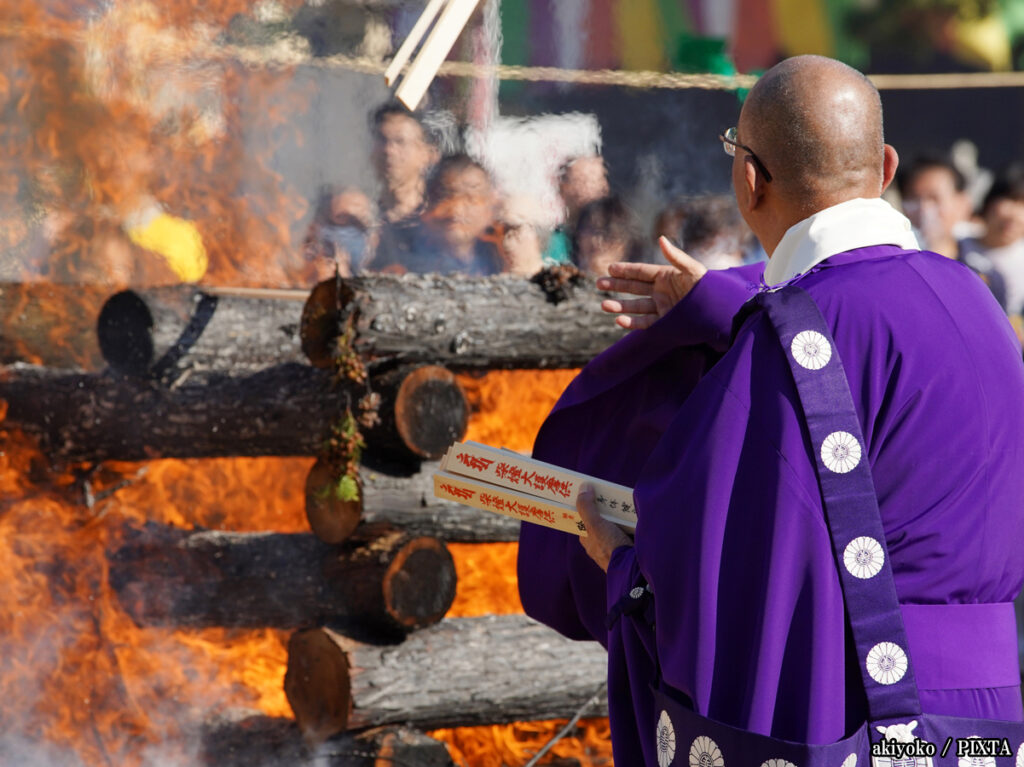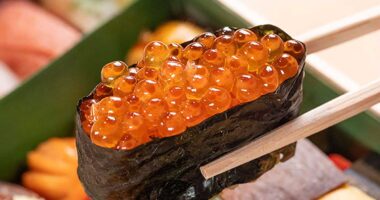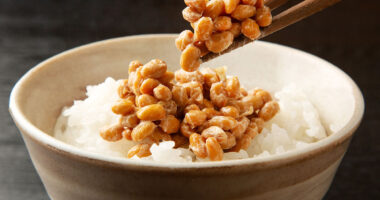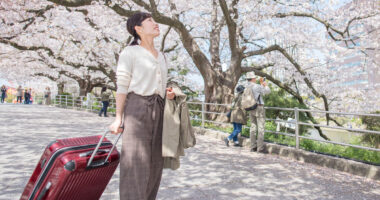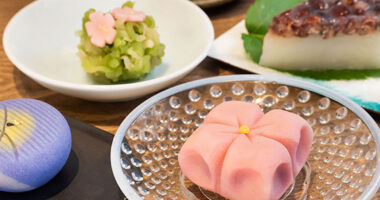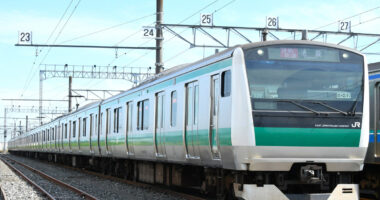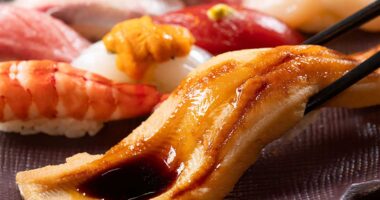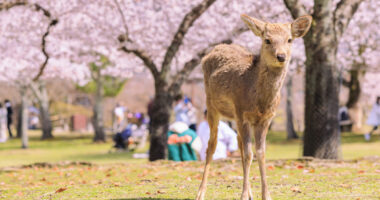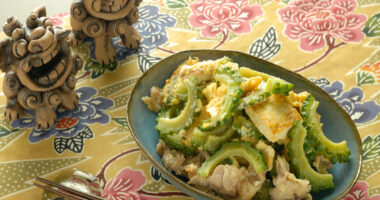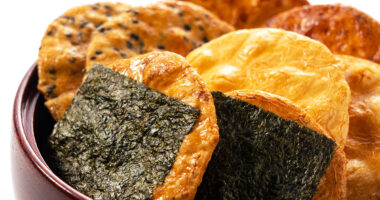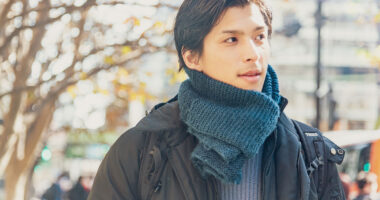There’s a certain kind of silence that settles in just before a ritual begins—the kind that feels sacred, even if you don’t yet understand why. In Japan, one of the most quietly powerful traditions you may encounter is yakuyoke (also known as yakubarai), a purification rite intended to ward off misfortune and restore balance. You won’t see it splashed across billboards, yet it’s practiced at Shintō shrines and Buddhist temples across the country.
How can international visitors approach something so deeply rooted in local belief with sincerity and respect?
Whether you’re curious about the cultural meaning behind yakuyoke or hoping to participate during your travels, this guide will walk you through everything you need to know—from what to expect during the ceremony to how to behave with care and grace.
Let’s start by understanding what yakuyoke actually is—and why it matters so deeply in Japanese life.
- What is yakuyoke, and why is it performed?
- Step-by-step guide to experience a yakuyoke ceremony
- Practicing proper etiquette
- Optimal timing for participation
- What to expect as a foreign participant or observer?
- Proper etiquette and behavior during the ritual
- Common elements: prayers, amulets, offerings
- Prayers: chanted invocations requesting divine protection
- Omamori: cloth amulets that offer safety in travel, health, or daily life
- Ofuda: wooden or paper talismans to be placed in your home altar or entrance
- Incense: Burned to purify
- Ema boards: wooden plaques where visitors write wishes or prayers
- Offerings: coins, rice and sake as signs of gratitude and devotion
- Conclusion: a ritual worth remembering
What is yakuyoke, and why is it performed?
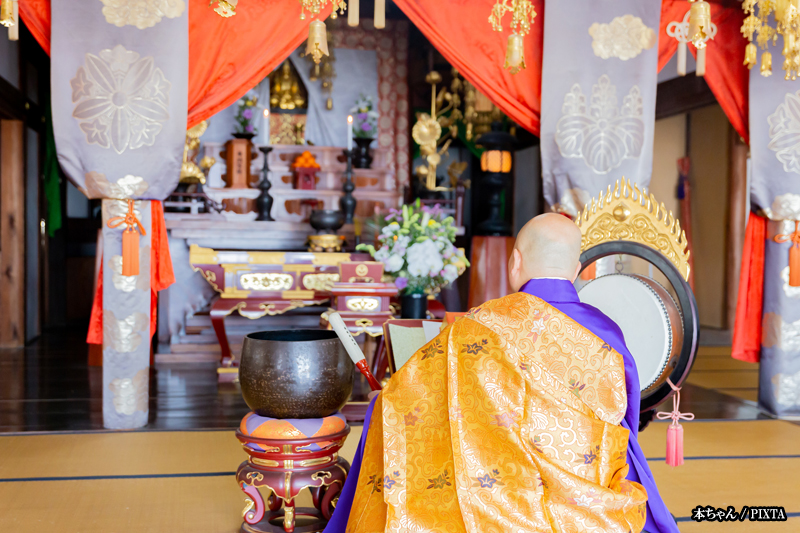
Photo for illustrative purposes
Yakuyoke, which translates to “warding off misfortune,” is a Japanese misfortune cleansing ritual performed at shrines and temples throughout Japan to help people ward off bad luck. It’s especially popular during the New Year period and around yakudoshi, or “unlucky years,” in which people are believed to be particularly vulnerable to spiritual imbalance and hardship.
These unlucky years—mainly 25, 42, and 61 for men; 19, 33, and 37 for women—are marked on many traditional Japanese calendars. The belief is that during these transitional stages of life, individuals are more susceptible to illness, bad luck, or accidents. Thus, the yakuyoke ritual offers a symbolic reset, a way to align oneself spiritually and cast away negativity before it can manifest.
You don’t need to be at a “critical age” to participate. Many people, regardless of age or gender, perform yakuyoke as a preventive measure, especially during times of personal change: new jobs, new homes, relationships, or even before taking important exams.
Step-by-step guide to experience a yakuyoke ceremony

Photo for illustrative purposes
For travelers seeking spiritual cleansing and protection while in Japan, the yakuyoke or yakubarai ritual offers a profound cultural experience. Here’s a step-by-step guide to help you engage respectfully and meaningfully.
Choose a shrine or temple
Not all temples and shrines specialize in yakuyoke, so selecting the right site is key. Consider these well-known destinations:
- Kawasaki Daishi Heikenji Temple (Kanagawa): Famous for daily Goma fire rituals.
- Iwashimizu Hachimangū Shrine (Kyoto): Hosts the Yakuyoke Taisai festival every January.
- Mibu-dera Temple (Kyoto): Offers Setsubun ceremonies with traditional Kyogen comedic theater.
Reception and registration
Most rituals begin at a small reception area, often found near the main temple or shrine hall. Here, you’ll fill out a simple form with your name, age, and location. This information may be used during the ceremony when prayers are offered on your behalf.
What to expect?
A fee (hatsuhoryō in shrines, kiganryō or kitōryō at temples) is collected—typically ranging from about 3,000–10,000 JPY (sometimes more), but amounts and what’s included vary by institution. This is not a commercial fee but a traditional offering used for ritual purposes. In many cases, the fee includes an amulet, talisman or wooden votive plaque for you to take home.
Participate in the purification ceremony
The nature of the ritual will vary depending on whether you’re at a Shinto shrine or Buddhist temple:
- Shinto shrines: A kannushi (priest) uses a haraegushi (purification wand) and chants to cleanse impurities.
- Buddhist temples: The goma fire ritual burns prayer-inscribed gomagi (wooden prayer sticks), symbolizing the destruction of bad karma and the invocation of protective deities.
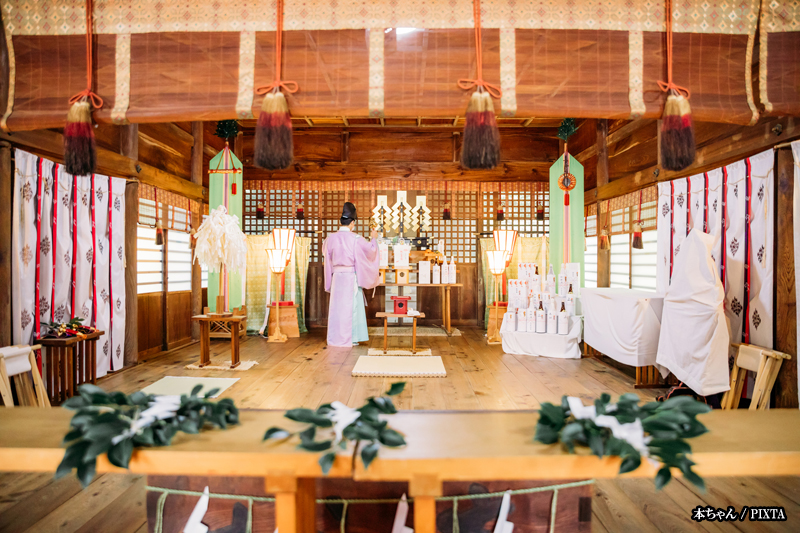
Photo for illustrative purposes
Receive protective amulets and charms
After the ritual, participants may obtain protective charms to take home.
- Omamori: Personal protection charms
- Ofuda: Talisman for enshrining at home
- Ema: Wooden plaques where you can write your wishes and hang them on shrine and temple grounds
These are believed to carry blessings and act as shields against negativity. It’s customary to keep these items in a clean place—at home, in your bag, or even in your car.
Engage in additional traditions
To further immerse yourself in the ritual’s cultural depth, explore associated traditions:
- Mamemaki: Bean-throwing ritual to drive away evil spirits—commonly done during the Setsubun festival (around Feb. 3).
- Kyogen performances: Satirical theatrical plays at temples like Mibu-dera.
- Sweet offerings: Traditional temple treats such as zenzai (sweet red bean soup) may be served after the ceremony at some temples and shrines.
By following these steps with mindfulness and respect, visitors can meaningfully engage in a centuries-old ritual for purification, spiritual safety, and fresh beginnings.
Point to remember:
You don’t need to understand every chant or gesture. Your respectful presence is enough.
Practicing proper etiquette
Respecting temple or shrine customs ensures a smooth and honorable experience.
At Shinto shrines
- Wash your hands and mouth at the temizuya (purification fountain) if available.
- Offer coins gently into the donation box.
- Gently shake the rope to ring the bell, when available.
- Follow the prescribed bow-and-clap sequence (“two bows, two claps, one bow” is most common, but some larger shrines have more bows and claps) to pay your respects.
At Buddhist temples
- Wash you hands and mouth at the temizuya if available.
- You may light incense before praying.
- At some larger temples with big incense burners, you can wave smoke over your yourself for extra purification.
- Offer coins gently into the donation box.
- Bow once with hands together and pray silently—no clapping.
Optimal timing for participation
Though yakuyoke rituals can be performed year-round, certain periods offer deeper spiritual resonance. Below are the optimal timings for participation.
- New Year (early to mid-January): During hatsumōde, Japan’s first shrine or temple visit of the year.
- Setsubun (around February 3rd): A popular time for cleansing ceremonies and mamemaki.
- Your personal yakudoshi year: Ideally, some time during your specific critical or adjacent years.
What to expect as a foreign participant or observer?
Not Japanese? Not a problem. The yakuyoke ritual is more inclusive than you might think—and as long as you approach it respectfully, you’re welcome.
Here’s what to expect!
Language and accessibility
- Rituals are usually conducted entirely in Japanese.
- Some larger temples may provide multilingual pamphlets/English information sheets, including signage, explaining the ritual. This signage may indicate where to stand or sit. Don’t hesitate to ask (politely).
- Most communication is non-verbal—so following visual cues and copying others is perfectly acceptable.
Smart suggestion:
Look for temples with a known openness to tourists. These often have signs in English or staff who are used to international visitors.
Participation vs. observation
- You’re welcome to observe quietly from the back if you’re unsure. That, too, is a form of respect.
- If you’d like to participate, staff may help you register with minimal language needed—pointing and smiling go a long way!
Cultural tip:
When in doubt, follow the lead of locals. If they bow, you bow. If they sit quietly, you do too.
Proper etiquette and behavior during the ritual
Yakuyoke is less about perfect execution and more about the mindset you bring. Respect guides every gesture, so you don’t need to be an expert—only present, mindful, and sincere.
Use the checklist below as a friendly guide rather than a rigid rulebook. These pointers help you settle in quietly, allowing the purification to unfold without distraction.
Etiquette checklist
- Dress modestly (shoulders and knees covered)
- Turn off your phone (completely silent)
- Arrive a few minutes early
- Speak in hushed tones (or not at all)
- Remove hats and sunglasses indoors
- Bow slightly when entering or leaving the ceremonial space
- Accept amulets or items with both hands
Things to avoid
Balance the “do’s” with these simple “don’ts” to keep the atmosphere serene and focused.
- You don’t have to be perfect—just be present and respectful.
- Wear revealing or loud clothing
- Take photos during the ceremony
- Interrupt the ritual or chat
- Touch sacred objects unless invited
- Use phones or record audio/video
Common elements: prayers, amulets, offerings
Every yakuyoke or yakubarai rite uses a few key objects and elements. Each one carries its own story and purpose. Together these items turn a simple visit into a full act of cleansing and protection.
Let’s explore some of the meaningful symbols and objects you might encounter during a yakuyoke or yakubarai ritual. Each one adds depth and spiritual resonance to the ceremony.
Key elements and their significance
Prayers: chanted invocations requesting divine protection
In both Shintō and Buddhist practices, chanting holds a central role in connecting practitioners to the spiritual world. In Shintō rituals, priests recite norito—formal prayers—using carefully structured rhythm and language to communicate gratitude, seek blessings like protection from misfortune (yakuyoke), and request good fortune (kaiun). In Buddhism, particularly in esoteric and Zen traditions, chants such as shōmyō are intoned in melodic and repetitive patterns. These chants are believed to help purify the mind, harmonize the body and spirit, and establish a meditative state that brings one closer to the spiritual or cosmic order.
Omamori: cloth amulets that offer safety in travel, health, or daily life
Omamori are small, colorful amulets that blend Shinto and Buddhist traditions, designed to provide spiritual protection or support in various areas of life such as travel safety, academic success, love, or business prosperity. Each omamori is typically associated with a specific shrine or temple and should not be opened, as doing so is believed to release its spiritual blessing. The protective power of an omamori generally lasts about one year, after which it should be respectfully returned to the temple or shrine where it was obtained for proper ritual disposal. These sacred items are a reflection of both religious heritage and evolving modern culture in Japan.
Ofuda: wooden or paper talismans to be placed in your home altar or entrance
Larger than omamori, an ofuda is a wooden or washi-paper talisman inscribed with the temple’s principal deity’s name. Families enshrine it in the household kamidana (god shelf) or above the doorway, inviting protective energies to enter each morning. During New Year’s, people line up to replace last year’s ofuda, symbolically “refreshing” the home’s spiritual firewall.
Incense: Burned to purify
Lighting incense at Buddhist temples isn’t merely aromatic; the rising smoke is said to carry prayers upward while its cleansing fragrance purifies mind, body, and surroundings. At temples with large incense burners, many devotees waft a little smoke toward themselves, gently patting it onto the head or over sore joints, believing the purification lingers on the skin.
Ema boards: wooden plaques where visitors write wishes or prayers
Originally depicting horses once offered to the gods, ema (“horse pictures”) are now small wooden plaques decorated with images like animals, flowers, or symbols of good fortune. Visitors write their wishes, ranging from academic success to world peace, on one side and place them on communal racks at shrines. These messages are later reviewed by priests, who offer prayers on behalf of the petitioners. Periodically, the ema are ritually burned in ceremonies called ema kuyō, believed to release the wishes to the realm of the Shinto kami (gods) or Buddhist deities and bodhisattvas.
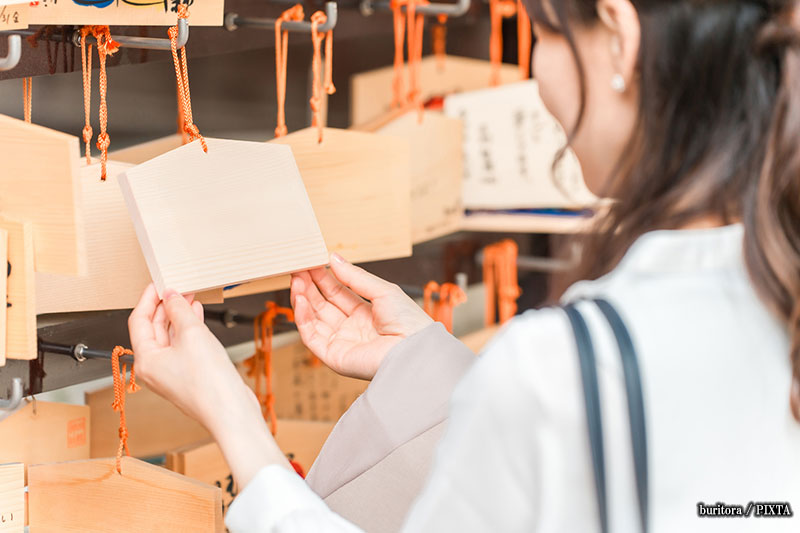
Photo for illustrative purposes
Offerings: coins, rice and sake as signs of gratitude and devotion
Putting coins into the saisenbako (offertory box) is part of the experience at both Buddhist temples and shrines, but at Shinto shrines, the sharp clink announces your presence to the deities. Some Shinto pilgrims elevate devotion by presenting heihaku—folded strips of fine cloth—or staples like rice and sake. Offerings serve two purposes: expressing gratitude for blessings already received and demonstrating sincerity in future petitions.
Conclusion: a ritual worth remembering
Participating in a Japanese misfortune cleansing ritual isn’t just about stepping into a tradition—it’s about stepping into a moment. A moment where time slows, your intentions sharpen, and a subtle sense of peace begins to settle in. Whether you join the ceremony hands folded in prayer or simply observe from the sidelines with an open heart, your presence is a form of quiet respect—and a bridge between cultures.
In a world where travel often rushes from sight to sight, yakuyoke or yakubarai invites you to pause, to reflect, and to walk away with something intangible yet deeply grounding.
If you’re thinking of making yakuyoke or yakubarai part of your Japan experience, bookmark this guide or share it with your fellow travelers—it might just help you turn a simple visit into a soulfully memorable one.
Ready to explore the ritual the right way? Scroll back up and take your first step!
